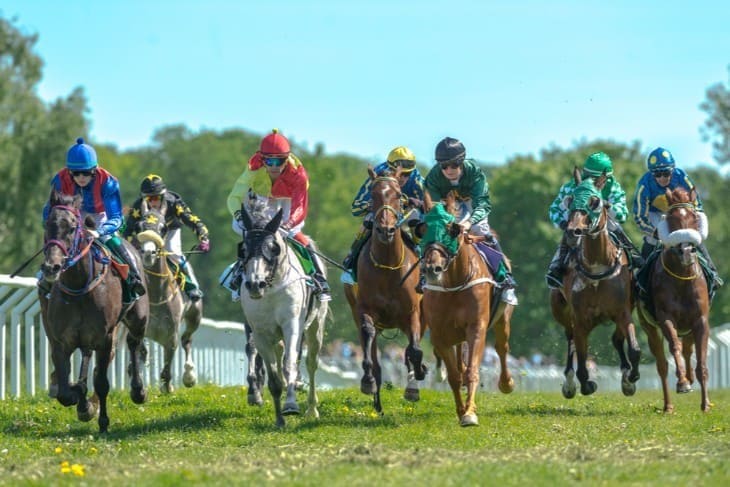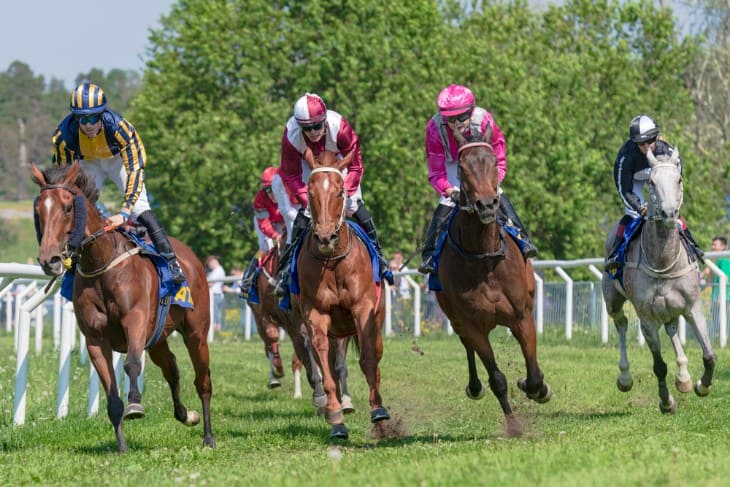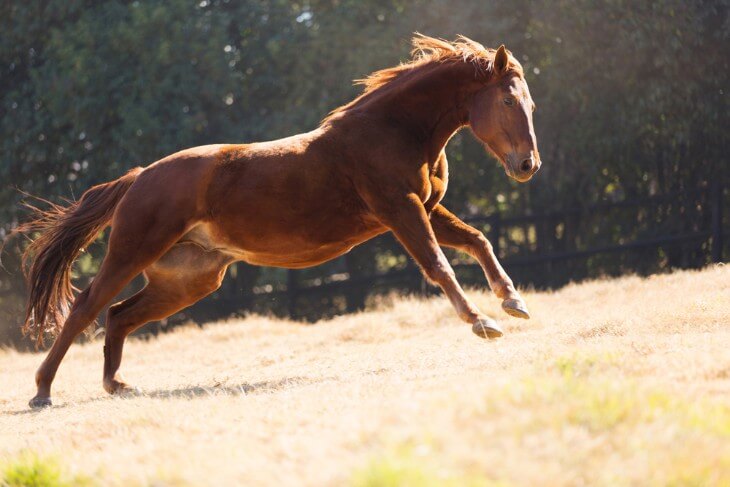- The Athletic Physiology of Racehorses
- Understanding the Racehorse Diet: Nutritional Requirements
- Crafting the Perfect Diet for Peak Performance
- The Vital Role of Forage and Supplements
- Water, Hydration, and Electrolyte Balance
- Maintaining Optimal Health: Exercise and Conditioning
- Equine Care and Wellness: The Stable Staff's Duties
- Racehorse Grooming and Coat Care
- Ensuring Mental Well-being: Stress Management for Racehorses
- Conclusion
The Athletic Physiology of Racehorses
The exceptional performance of racehorses can be attributed to their unique physiological adaptations, meticulously honed through generations of selective breeding. At the core of their athletic prowess lies a predominance of fast-twitch muscle fibres, which enable explosive bursts of speed and power during sprints.
Complementing their muscular composition is a highly efficient cardiovascular system. Racehorses possess larger hearts capable of pumping an immense volume of blood with each powerful contraction, ensuring optimal oxygen and nutrient delivery to their hard-working muscles during intense exercise.
Their respiratory system is equally remarkable, featuring expansive lungs that facilitate the rapid exchange of oxygen and carbon dioxide, supporting their high metabolic demands and delaying the onset of fatigue.
- Fast-twitch muscle fibres make up a higher percentage of a racehorse's muscle composition compared to other equine breeds, granting them unparalleled acceleration and speed.
- The heart rate of a racehorse can reach up to 240 beats per minute during competition, a testament to their incredible cardiovascular endurance.
- Racehorses have an exceptional lung capacity, allowing them to inhale up to 1.5 litres of air with each breath during exercise.
Understanding the Racehorse Diet: Nutritional Requirements
Fueling the athletic prowess of racehorses demands a meticulously balanced diet, tailored to meet their specific energy and nutritional requirements. At the foundation of their diet lies high-quality forage, such as hay and fresh pasture, providing essential fibre, vitamins, and minerals.
To complement the forage, concentrated feeds rich in digestible energy sources like oats, barley, and maize are incorporated. These energy-dense grains fuel the intense workouts and races, ensuring the horses have the stamina to perform at their peak.
Crafting the perfect diet is a delicate art, taking into account factors such as the horse's age, weight, metabolism, and training intensity. Overfeeding can lead to weight gain and impaired performance, while underfeeding can result in muscle wasting and compromised health.
- Racehorses require a diet that provides approximately 20-25% of their daily caloric intake from protein to support muscle development and repair.
- Electrolyte supplementation is often necessary to replenish minerals lost through sweat, particularly during intense exercise or hot weather conditions.
- Regular body condition scoring and weight monitoring are essential to ensure the horse's diet is appropriately adjusted as their needs change throughout their racing career.

Crafting the Perfect Diet for Peak Performance
Crafting the perfect diet for a racehorse is a collaborative effort between equine nutritionists, trainers, and stable staff, all working together to optimise the horse's performance and well-being. The key lies in striking the right balance of macronutrients, vitamins, and minerals tailored to the individual horse's needs.
Protein is a crucial component, supporting muscle repair and development while maintaining a lean physique. Essential amino acids are carefully balanced to promote efficient protein utilisation and minimise excess weight gain.
Carbohydrates, primarily derived from cereal grains like oats and barley, provide the primary source of energy for these high-performance athletes. However, some horses may benefit from alternative energy sources, such as fats and oils, to accommodate dietary sensitivities or specific metabolic needs.
Vitamins and minerals play a vital role in overall health and recovery. Antioxidants like vitamin E support muscle function and immune health, while calcium and phosphorus are essential for strong bones and skeletal integrity.
- Feeding schedules are meticulously planned, with meals strategically timed to ensure the horse has optimal energy levels during training and competition.
- Frequent reevaluation of the diet is necessary as the horse progresses through its racing career, with adjustments made to account for changes in workload and physiological demands.
- Close collaboration between the nutrition team and veterinarians helps identify and address any nutritional deficiencies or imbalances that may affect the horse's health or performance.
The Vital Role of Forage and Supplements
Forage, in the form of high-quality hay and fresh pasture, is the cornerstone of a racehorse's diet, providing essential fibre, nutrients, and mental stimulation. Access to fresh pasture allows racehorses to engage in natural grazing behaviours, promoting psychological well-being and reducing stress.
Supplements play a crucial role in optimising the horse's health and performance, addressing specific nutritional needs or supporting their overall well-being. Common supplements include vitamins and minerals to bridge any dietary gaps, as well as omega-3 fatty acids for their anti-inflammatory properties and joint health benefits.
Joint supplements containing glucosamine and chondroitin sulphate are also widely used to promote cartilage health and reduce the risk of joint-related injuries, a common concern for these high-performance athletes.
- Hay analysis is often performed to ensure the forage meets the horse's nutritional requirements and is free from harmful contaminants or mould.
- Probiotics and digestive aids may be incorporated to support gut health and optimise nutrient absorption.
- The use of supplements should always be guided by a qualified equine nutritionist or veterinarian to ensure safety and efficacy.
Water, Hydration, and Electrolyte Balance
Proper hydration is absolutely crucial for racehorses, as even mild dehydration can severely impair their performance and overall well-being. During intense exercise, these athletes can lose significant amounts of water and electrolytes through sweat, necessitating constant access to clean, fresh water.
In hot weather or after particularly strenuous workouts, electrolyte imbalances can occur, leading to muscle cramps, weakness, and even more severe complications. To restore electrolyte balance, some horses may require electrolyte supplements or have their feed and water carefully adjusted.
However, supplementation must be carefully monitored, as excessive intake can lead to imbalances and potential health issues. The stable staff plays a vital role in monitoring water intake, hydration levels, and electrolyte balance, promptly addressing any signs of dehydration or imbalance.
- Racehorses can lose up to 15 litres of fluid through sweat during a single race, emphasising the importance of proper hydration strategies.
- Electrolyte supplementation may include sodium, potassium, calcium, and magnesium to replenish losses and support muscle function.
- Monitoring techniques, such as skin tent tests and capillary refill time, help stable staff assess hydration status and guide appropriate interventions.
Maintaining Optimal Health: Exercise and Conditioning
A comprehensive exercise and conditioning program is essential for developing and maintaining a racehorse's physical and mental abilities. Training begins early in a racehorse's life, gradually increasing in intensity and complexity as they mature.
Exercise routines are carefully tailored to the horse's age, fitness level, and racing goals. Young horses may start with low-intensity workouts to build a strong foundation, while seasoned competitors undergo more intense training to fine-tune their speed and stamina.
Cross-training exercises, such as swimming, trotting, or hill work, are often incorporated to provide variety and challenge, reducing the risk of repetitive strain injuries. Adequate recovery periods are also crucial, allowing the horse to rest and recuperate after intense workouts, avoiding overtraining and burnout.
- Interval training, alternating periods of high-intensity exercise with recovery periods, is often used to improve cardiovascular fitness and speed.
- Proprioceptive exercises, such as cavaletti work or ground poles, can enhance coordination, balance, and body awareness.
- Monitoring techniques like heart rate monitors and lactate testing help trainers gauge the horse's fitness levels and adjust training intensities accordingly.
Equine Care and Wellness: The Stable Staff's Duties
Behind the scenes of every successful racehorse is a dedicated team of stable staff, whose tireless efforts and attention to detail ensure the horse's well-being and peak performance. Their duties encompass a wide range of responsibilities, from feeding and grooming to monitoring health and behaviour.
Feeding a racehorse is a precise art, with each meal carefully measured and tailored to meet the individual's specific dietary needs. Stable staff work closely with equine nutritionists to implement the ideal diet and feeding schedule, ensuring the horse receives the right nutrients at the right times.
Grooming is not merely about maintaining appearance; it is an essential aspect of health monitoring and bonding. Daily grooming sessions promote a healthy coat, enable thorough body inspections for any signs of injury or abnormality, and foster trust and cooperation between the horse and its caretakers.
- Stable staff play a crucial role in monitoring the horse's behaviour, appetite, and overall demeanour, promptly reporting any changes or concerns to the veterinary team.
- Regular stall maintenance, including mucking out and providing fresh bedding, ensures a clean and comfortable living environment for the horse.
- Stable staff often develop deep bonds with the horses in their care, understanding each individual's unique personality and needs.

Racehorse Grooming and Coat Care
Grooming is a time-honoured tradition in equine care, and for racehorses, it holds particular significance beyond aesthetics. Regular grooming sessions are essential for maintaining a healthy coat, but they also serve as an opportunity for the stable staff to thoroughly inspect the horse's body for any cuts, abrasions, swelling, or other issues that may require attention.
The act of brushing stimulates the skin, distributes natural oils, and promotes increased blood circulation, contributing to a glossy and vibrant appearance. During grooming, the staff also inspects the horse's hooves, ensuring they are free from debris and in good condition for proper hoof care and shoeing.
Beyond the physical benefits, grooming fosters a strong bond between the horse and its handlers. The time spent together builds trust and familiarity, which is crucial for racehorses who must place their confidence in their handlers during intense training and competitions.
- Specialised grooming tools, such as curry combs and body brushes, are used to effectively remove dirt and shed hair while massaging the muscles.
- Proper hoof care, including regular trimming and shoeing, is essential for maintaining soundness and preventing lameness.
- The grooming routine provides an opportunity for early detection and treatment of skin issues, such as rashes, fungal infections, or rain rot.
Ensuring Mental Well-being: Stress Management for Racehorses
The intense demands of training, competition, and travel can take a toll on a racehorse's mental well-being, making stress management a critical component of their care. A calm and focused mindset is essential for optimal performance on the racetrack.
Providing a consistent and stable environment is key to reducing stress and anxiety in racehorses. Maintaining a regular routine for feeding, exercise, and rest helps create a sense of predictability and security, which these creatures thrive on.
Ample turnout time in paddocks or pastures allows racehorses to engage in natural behaviours and socialise with other horses, reducing stress levels and preventing boredom. Some horses may also benefit from calming supplements, aromatherapy, or massage therapies to promote relaxation, but these should always be guided by a veterinarian or equine behaviour specialist.
- The attitude and behaviour of the handlers significantly impact the horse's mental state, emphasising the importance of remaining calm, patient, and positive during interactions.
- Environmental enrichment, such as the introduction of novel objects or scents, can provide mental stimulation and help alleviate boredom.
- Regular monitoring for signs of stress, such as changes in appetite, behaviour, or physical indicators like increased heart rate or sweating, allows for timely intervention and support.
Conclusion
The world of racehorses is a captivating blend of athleticism, grace, and unwavering dedication. These remarkable equine athletes are the result of centuries of selective breeding and meticulous care, with every aspect of their nutrition and well-being meticulously tailored to support their exceptional performance on the racetrack.








